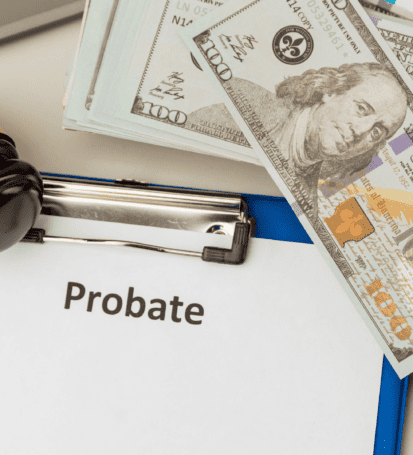Ademption is a common law doctrine that is used to describe when a real estate property is listed in a will. This is especially if the property wasn’t in the testator’s possession before he/she died.
Ademption mostly occurs if the said property was either destroyed or sold before a testator or granter’s death.
How is Ademption Structured?
In Ademption, the rule is that a gift isn’t adeemed if it changes form or name. A gift can only be adeemed if the testator does not have it in their possession.
Most times, to avoid any form of confusion regarding a gift that will be adeemed or not, the benefactor will include the phrase or line: “if owned by me at my death” somewhere in the will.
Ademption is a law doctrine that is different from Abatement. In Ademption, the gift mentioned in the will is no longer a part of the testator’s properties. This may be because it was sold or destroyed. So in this case, the beneficiary won’t be able to receive the mentioned gift.
Abatement, on the other hand, talks about the reduction of gifts or legacies left by a testator. This is a result of the fact that there aren’t enough assets or funds to pay the beneficiaries in full.
How is Ademption used?
Most estate planning specialists, when establishing estates, advise that people should endeavor to plan Ademption cases.
Also, you should learn to indicate in clear terms and language, if a property or real estate is no longer in your possession at the time of your demise. This will help to ensure that your wishes are fully fulfilled at your death.
Example Of Ademption In Probate
Ademption occurs when identified property is no longer in the testator’s estate at the time of death. It could have been sold, destroyed or otherwise disposed of during the lifetime of the testator. For example, let’s assume that a will provides that the testator’s Tesla Model X is to be distributed to his daughter, Lisa. But, by the time the testator passes away in 2035, the Tesla Model X battery is absolete and sites in a pile of batteries in a junkyard.
In this case, the Tesla model-x is a non-existent property which is also known as “adeemed”. This means that the gift is no longer of importance to the person or heir for whom it was originally meant.
In this example, the gift adeems, which means that it becomes moot and irrelevant. The named recipient does NOT get reimbursed for the value of the potential gift from the other components of the estate. This applies whether the property was intentionally removed from the testator’s possession (such as, for example, if the testator gave the Corolla to someone else during his lifetime) or unintentionally removed (such as if the car was repossessed or died).
Another example of ademption in probate is if a testator bequeathed a two-story building to a specific beneficiary but the bank took it over leaving the decedents share at 0% at the time of death. The two story building in this case means nothing to the beneficiary and no portion of the asset will be transferred to the heir.
Lifespan Of Ademption
Ademption can last for a long time. However, in some cases, if a testator received insurance for the property they lost, then the beneficiary can go ahead to receive their gift.
Synonyms for Ademption
Other terms that can be used to qualify Ademption include:
- Withdrawal
- Subtraction
- Abduction
- Ablation
Frequently Asked Questions About Ademption
Below are some popular questions regarding Ademption that you may want answers to;
Can anything be done if I am the beneficiary of adeemed property?
Unless a testator is dead, he or she cannot lose ownership of their properties and so, can use it in whichever manner they please. This means that if you are not listed as a beneficiary, you may not be able to acquire any of the testator’s property.
How does ademption happen?
First, you write a will and leave one of your properties to your wife and children. After making this will you decide to sell off that property to buy an entirely different property.
In a case like this, the surviving members of your households will no longer be able to lay claims to the former property. Why? Because it’s no more yours. This category of Ademption is known as “Ademption by extinction”
What is the full effect of Ademption?
What is an Ademption exception?
For instance, if one of the cars you transferred to your child got in an accident a few weeks or days before your death, your child will be entitled to get the proceeds from your insurance company.
Lastly, if the testator named a cash bequests source, the ademption rule doesn’t apply here, especially if it’s a demonstrative bequest



